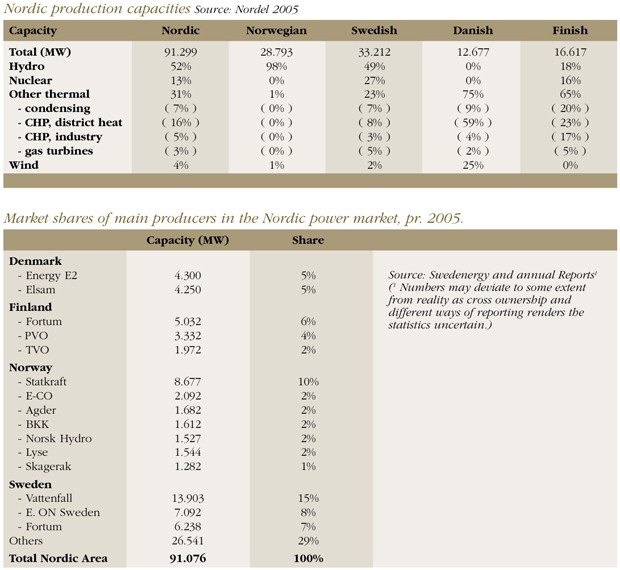The outlook for new production capacities in the Nord Pool area can be summarized as follows. Finland has decided to build a new nuclear power plant with a net capacity of 1600 MW. The unit is expected to be operative at the turn of 2010-2011. This will balance supply and demand in Finland making the country less dependent on imports from Russia and Estonia.
A recent prognosis published by the Swedish energy authorities predicts growing production capacities forcombined heat and power (CHP), wind power and nuclear power production under certain assumptions. According to the report, Sweden will have a power surplus of 21.3 TWh in 2015 and 16.6 TWh in 2025.
Future additional supply of power in Norway will primarily consist of natural gas, wind power, and small scale hydro-power producers. There are currently 3 natural gas units under construction. Taken together this will see an increased net capacity of 915 MW.
Danish energy authorities expect the Danish production of power to grow to between 50 and 60 TWh in 2025. Total Danish power production in 2006 was 43 TWh.
Highest nuclear utilization
Generation as measured in TWh depends on plant utilization. Utilization differs significantly among the different types of power generation units. Roughly speaking, wind power production units utilize around 3000 hours a year, while nuclear units utilize around 7800 hours a year. The utilization of Gas- and coal fired units also varies significantly. Hydro-power plants depend greatly on inflows but are usually around the 4000 – 5000 hours level. A year with 365 days has 8760 hours. Utilization of CHP (combined heat and power) units depends on heat demand and electricity prices.
Power production in the Nordic area depends on rainfall meaning that the production shares of different types of power units will vary from year to year. Hydro-power is the main source accounting for about half of the total installed capacity.

By Håkon Mørch Korvald and Tor Arnt Johnsen